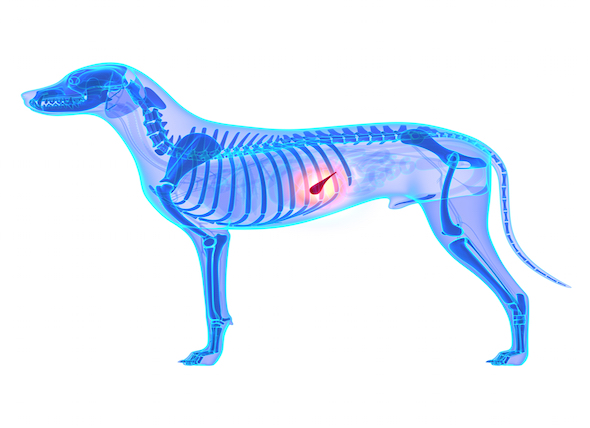

Systemic lupus erythematosus (SLE) is a multisystem autoimmune disease that is characterized by the formation of antibodies against a wide array of self-antigens (antibody-generating substances) and circulating immune complexes. In other words, this is disease in which the body's immune system has become hyper-defensive, attacking the cells, organs, and tissues of its own body as if they are diseases that need to be destroyed.
High levels of circulating antigen-antibody complexes (type III hypersensitivity) are formed and deposited in the glomerular basement membrane (the filtration portion of the kidney), the synovial membrane (the soft tissue that lines the surface space within joints such as the wrist, knee, etc.), and in the skin, blood vessels, and other sites in the body. Antibodies that are directed toward self-antigens that reside on and within cells, such as erythrocytes, leukocytes, and platelets (three kinds of blood cells with type II hypersensitivity), may also be produced. To a lesser degree, type IV hypersensitivity may also be involved when cell-mediated immunity is directed against a self-antigen.
SLE is rare, but is believed to be underdiagnosed. Some of the breeds that appear to have a predilection for SLE include Shetland sheepdogs, collies, German shepherds, old English sheepdogs, Afghan hounds, beagles, Irish setters, and poodles. SLE was reported as a hereditary disorder in a colony of German shepherds. The mean age is six years, but it can occur at any age. Gender does not play a role.
Clinical symptoms depend on the localization of the immune complexes, along with the specificity of the autoantibodies. However, genetic, environmental, pharmacologic, and infectious factors may play a role in the appearance of clinical signs such as letahrgy, loss of appetite (anorexia), and fever, which is especially seen in the acute phase. Other signs include:
Musculoskeletal
Skin/exocrine
Renal/urologic
Blood/lymph/immune system
The definitive causes for SLE are unidentified, but exposure to ultraviolet light may exacerbate the disease.
A complete blood profile will need to be conducted, including a chemical blood profile, a complete blood count, and a urinalysis. You will need to give a thorough history of your dog's health and onset of symptoms, and whether the symptoms have occurred in succeeding order, or all at once. Pain in the joints, kidney inflammation, skin lesions, breakdown of red blood cells, low platelet count, and general body weakness are all signs that will alert your doctor to the likelihood of lupus.
Hospitalization may be necessary for the initial management of SLE, especially if your dog is in a state of hemolytic (red blood cell destruction) crisis. However, outpatient management is often possible if the condition is not severe. The kind of care and the level of care will vary by which systems are being affected.
For at home treatment, you will need to enforce rest, especially during episodes of severe pain in the joints. You might consider cage rest for a short time, until your dog can safely move about again without overexertion. You may also need to avoid bright sunlight, which may require scheduling your dog's meal routine so that trips outdoors can be taken in the late afternoon/early evening. If the kidneys are being affected, your veterinarian will recommend a kidney specific protein-restricted diet.
There are a number of medications that can be used for treating SLE, such as immunosuppressive drugs for decreasing the immune system response, and corticosteroids for reducing inflammation in the lymph nodes. Your veterinarian will prescribe the medications required to treat the specific form the disease is taking in your dog.
Do not breed affected animals, as SLE is known to be hereditary in some breeds.
This is a progressive and unpredictable disease. Long-term, immunosuppressive therapy will be required. The treatments frequently have side effects that you will need to deal with as your dog's caretaker. Also, your veterinarian will want to see your dog weekly, at least initially, to monitor the effectiveness of the treatment and to watch for severe side effects.
 Fungal Infection (Aspergillosis) in Dogs
Aspergillosis in Dogs
Aspergillosis is an opportu
Fungal Infection (Aspergillosis) in Dogs
Aspergillosis in Dogs
Aspergillosis is an opportu
 Prostate Inflammation and Abscessation in Dogs
Prostatitis and Prostatic Abscess in Dogs
An absc
Prostate Inflammation and Abscessation in Dogs
Prostatitis and Prostatic Abscess in Dogs
An absc
 Inflammation of the Pancreas in Dogs
Pancreatitis in Dogs
The pancreas is part of the
Inflammation of the Pancreas in Dogs
Pancreatitis in Dogs
The pancreas is part of the
 Intestinal Disorder (Loss of Motility) in Dogs
Ileus in Dogs
Ileus (functional or paralytic) is
Intestinal Disorder (Loss of Motility) in Dogs
Ileus in Dogs
Ileus (functional or paralytic) is
 Lymph Node Inflammation (Lymphadenopathy) in Dogs
Lymphadenopathy in Dogs
Lymph nodes (or glands),
Lymph Node Inflammation (Lymphadenopathy) in Dogs
Lymphadenopathy in Dogs
Lymph nodes (or glands),
Copyright © 2005-2016 Pet Information All Rights Reserved
Contact us: www162date@outlook.com